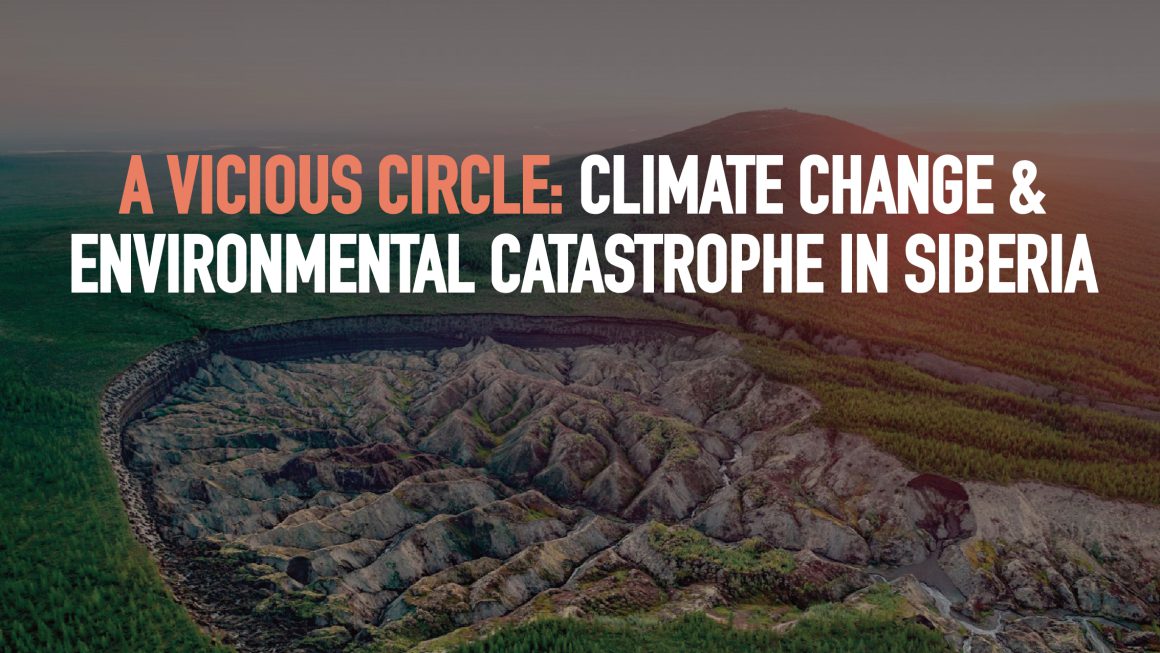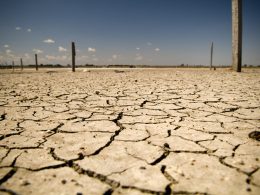By Rob Jones, Sotsialisticheskaya Alternativa (ISA in Russia)
If Siberia were a country, it would be the biggest in the world, stretching from the Arctic to Mongolia and Central Asia, from the Pacific Ocean to the Ural mountains on the edge of Europe. It contains incredible nature including the magnificent Lake Baikal and the remote and terrifying mountain ranges of Kamchatka, with its active volcanos. Several huge rivers span its territory. Many endangered species roam its territory including the Amur tigers and leopards, as well as Brown and Polar bears.
Yet capitalism, with its climate change and environmental disasters, is destroying it.
Since the end of May, twenty thousand metric tons of toxic diesel fuel have leaked out of a storage tank and into two rivers near the city of Norilsk in the Arctic circle. This is comparable to the thirty-seven thousand metric tons split by the Exxon Valdez off the Alaskan coast in 1989. The Russian government has declared a state of emergency in the region and said that the consequences will be felt, probably for decades.
Zombie forest fires
On top of this, and still early in the year when many parts of Northern Siberia would still usually be snow-bound, “zombie forest fires” as scientists have named them, have been blazing over a huge area of Siberia. 2019 saw record high temperatures in Siberia, which led to huge fires not just across forests, but the sun-dried taiga region too. An area the size of Belgium was burnt, during which time, every month the equivalent of Sweden’s annual carbon emissions were pumped into the air. On the surface, these fires died down but over the winter they continued to burn in the peat helped by the practically, and almost unheard of, snowless weather. Once Spring arrived, the fires rose again from their apparent death and have since consumed over 5 million acres, already almost as much as last year.
Flooding across Siberia has increased over the past decade, taking lives and destroying homes. As snow and ice in the more northerly regions melt and fill the great rivers such as the Ob, Yesenin and Lena, from which it is thought Lenin adopted his pseudonym, they overflow their banks. Many bridges have been swept away in recent years. Just last week the railway bridge linking part of the Murmansk region to the rest of Russia was swept away.
The diesel spill in Norilsk is one in a long line of industrial accidents that have damaged the environment. Gold mining, renowned for mercury contamination is spread widely across the region, whilst the world’s oldest and deepest lake, Baikal, has suffered over the past decade from the dumping of 15,000 tons of sewage and agricultural chemicals into its water. On the western border, as Asia merges with Europe is Lake Karachai, considered to be one of the most radioactive places in the world after it was used as a dump for nuclear waste from the Soviet arms program.
It is not surprising, given the callous disregard by big business and the state bureaucracy, that there are several Covid-19 hotspots across Siberia. The truth is we do not know the full scope of the spread of this disease as in some parts of Siberia, statistics are not even collated. After the case of oil workers in Yakutia, who protested about unsafe working conditions before it was revealed that 35% of the ten thousand-strong workforce had been infected, now workers at a goldmine have also been infected en masse.
Feedback loops
These however are not just a series of accidents that in general worsen the state of the global environment — there are catastrophic “feedback loops” in the whole situation, which threatens to dramatically escalate, and is indeed already worsening the climate crisis.
A large part of Siberia consists of permafrost — land that is frozen and never melts. Now, like the arctic ice, it is melting. As a result, there are many dangerous consequences.
Perhaps the most unexpected is architectural. In previous decades, buildings, railways and roads were designed on the assumption that the ground on which they were built was solid. As the permafrost melts, roads and railways are sinking, buildings are collapsing. It appears that this was a factor in last week’s Norilsk diesel leak, as the pillars supporting the structure of the tank collapsed into the ground. In fact, the number of building damaged in Norilsk in the past decade is greater than that over the previous fifty years. This is particularly worrying as there are numerous abandoned factories and chemical plants left after the collapse of the Soviet Union. Just one example of many is the former Usolye chemical plant that, according to the head of the state monitoring body is an “ecological Chernobyl” waiting to happen.
The melting of the permafrost is making Siberia an epicenter of climate change. May 2020 globally was the hottest May on record. Temperatures in parts of Siberia were 10 degrees Celsius above the average for that time of year — some parts of the region were as hot as Barcelona, and in the capital, Novosibirsk, where the average May temperature is ten degrees Celsius, the weather was so warm this year people were sunbathing on the city’s inland beaches. Meteorologists warn of extreme weather events including an increased number of tornadoes and hurricanes, as well as hail, thunderstorms and sand-storms.
Release of greenhouse gases
The real problem is that permafrost contains huge quantities of greenhouse gases, not just carbon dioxide, but also methane, an even more dangerous gas. Globally, it is estimated that there are 1,600 gigatons of carbon currently trapped in the permafrost, almost twice the amount currently in the atmosphere.
Until recently, the UN’s Intergovernmental Panel on Climate Change (IPCC), did not even take this into account when producing its forecasts. Scientists to some degree believed that the permafrost melt would be a slow and gradual process. Now, they are discovering that the process is happening very quickly. It is estimated that for every one degree rise in global temperature, permafrost releases the equivalent of about five years of coal, oil and natural gas emissions and within decades, it could become as big an emitter of greenhouse gases as China. The latest estimate is that the IPCC’s recommendations aimed at slowing down climate change need to be met eight years earlier than predicted to account for the permafrost.
It seems the whole process is one huge feedback loop. Higher air temperatures speed the melting process, which releases more greenhouse gases, pushing the temperature up even higher. As the permafrost melts, new lakes and rivers are formed, which are better conductors of heat into the ground. Now it seems that Siberia, a region that does not have high precipitation rates, experiences heavier snow falls in the winter, and the snow acts as a blanket, trapping the summer heat in the ground.
Climate change targets
The average temperature in Russia is already increasing at twice the global rate. For a period, Russian leaders viewed this as an opportunity, rather than a threat. Russia only ratified the Paris agreement last October. But this is, to a large degree, meaningless as Russia’s target under the agreement is to reduce and keep emissions at 25–30% below the level of 1990. The economic collapse and mass deindustrialization of the former Soviet economy in the 1990s ensured that this target was met long ago. Yet Russia is still the fourth largest emitter in the world, and after the US, the second highest per-capita polluter.
Most of these gases are emitted by Russia’s energy sector. GazProm is the world’s third largest culprit, whilst the coal industry and the oil companies, Lukoil, Rosneft, Surgutneftgas, Tatneft and Novatek are all amongst the 100 largest emitters in the world. Whilst many countries have moved away from the use of coal, Russia has increased coal-fired energy production by 30% in the last decade, and has been building new coal terminals.
In early Spring, the Russian government published its plans for dealing with climate change, which not only envisages an increase in emissions from 1.58 million tons of carbon dioxide in 2017 to 2.08 million tons by 2030. Of the 29 steps to be implemented by 2022, none are aimed at reducing emissions, but several are aimed at encouraging regions to take advantage of the economic benefits of warming, including an expansion of agricultural land and increased access to the Northern Sea route. The other measures are aimed at mitigating the effects of floods, extreme weather and possible diseases.
The Northern Sea route is a typical example of how capitalist greed is still looking to take advantage of global warming. Currently, sea trade from China and the Far East to Europe has to travel south and through the Suez canal. As the Arctic sea is warming up, the Northern Sea Route, once accessible for only two months in the year, is becoming navigable all year round. Already, test runs have been conducted. In 2018, for example, the “Venta Maersk”, a new “ice-class” container ship completed the journey. Russia is making its nuclear powered icebreaker fleet available to assist. This will significantly strengthen China’s access to European markets.
Apart from this, capitalist lips are drooling at the promises of the new wealth to be revealed as the Arctic ice retreats. Nickel, copper, oil, coal, gold, uranium and tungsten are all abundant and it is thought the world’s largest, as yet undiscovered, oil and gas reserves are in the Arctic. Consequently, all the Arctic powers are stepping up their military presence in the region. Russia is strengthening its former cold war bases on the Komi peninsula, Norway and Canada are stepping up their presence. Not to be left out, Britain has announced its Arctic strategy, basing 800 commandos and patrol aircraft in Norway. Naturally, the US is stepping up its presence too, all supported by NATO exercises in the region. Clearly the imperialist powers and the capitalist companies they represent have no intention of putting the interests of the environment ahead of their greed.
Need for radical, socialist change
If there is to be any chance of halting climate change, radical measures have to be taken. The whole Arctic should be made into an international reserve, with mineral exploration and exploitation banned. The multinational companies who continue to pump out greenhouse gases should all be nationalized and placed under democratic workers’ control. Resources have to be provided to prepare the damage to the environment that has already been done across Siberia. This can only be done if the current capitalist system is replaced by democratic economic planning and international cooperation as part of a global socialist society.












